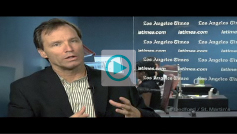Web 2.0
Printed Page 270
The shift to Web 2.0 has encouraged a deeper trend toward media convergence: different types of content (video, text, audio) created by all sorts of sources (users, corporations, nonprofit organizations) coming together. While the Internet was primarily a medium for computer-savvy users to deliver text-and-graphic content during its Web 1.0 stage, it’s now a place where people can access and share all manner of media content: music on Spotify, video on YouTube, journalism on Blogspot, eBooks on Amazon, mountains of collective intelligence on Wikipedia, gossip on Twitter, and relationships on Facebook. Where the signature products of Web 1.0 were increased content access and accompanying dot-com consumerism, the iconic achievement of Web 2.0 is social networking.
Clearly, the Internet is much more interactive, collaborative, and ungovernable than before: People use it not only for uploading and downloading content, but also for chatting with friends and colleagues; for social, political, and professional networking; and for spreading, processing, and challenging information with blogs and wikis. Consider the following defining applications of Web 2.0.
Instant Messaging (IM)
One of the Internet’s fastest-growing features in the late 1990s, instant messaging (IM)services allow users to assemble personalized “buddy lists” of friends, build personal profiles, and chat in real time with any of their buddies online (a type of one-to-one communication). Major IM services—many of which now offer voice and video chat capabilities as well—include AOL Instant Messenger (AIM), Microsoft’s MSN Messenger Service, Yahoo!’s Messenger, Apple’s iChat, Skype (owned by eBay), and Google’s GChat. The rapid growth of some IM services has slowed in recent years as mobile phone text-messaging and IM tools on Facebook and MySpace have become popular.
Social Networking Sites
Social networking sites—including Facebook, MySpace, Friendster, LiveJournal, hi5, Bebo, and Xanga—have become among the most popular places on the Internet. The largest of these sites, Facebook, has become a global phenomenon. Facebook empowers users to create personal profiles; upload photos; create lists of their favorite movies, books, and music; and post messages to connect with old friends and meet new ones. A subcategory of social networking sites contains sites more specifically devoted to professional networking, such as LinkedIn.
VideoCentral
 bedfordstmartins.com/ mediaessentials
bedfordstmartins.com/ mediaessentials

The Rise of Social Media
Media experts discuss how social media are changing traditional media.
Discussion: Some consider the new social media an extension of the very old oral form of communication. Do you agree or disagree with this view? Why or why not?
Social networking sites have given a huge boost to one-to-many communication. They’ve also raised some thorny privacy questions: Should we post highly personal information about ourselves, including pictures and messages about our political views? (Potential—or current—employers routinely visit these sites to examine job candidates’ or employees’ profiles.) Should information in our profiles be considered public for some eyes but off-limits to others?
Blogs
Weblogs, more commonly known as blogs, are sites containing user-generated articles in chronological, journal-like form, often including reader comments and links to other sites. There are also video blogs, in which bloggers deliver their message on screen, usually captured by a Webcam.

Like IM and social networking sites, blogs have reshaped the way people consume and use information. Some blogs are simply an individual’s online journal or personal musings. Others provide information, analysis, or commentary that isn’t presented in the more traditional news media. Many blogs, including TMZ (celebrity gossip), Talking Points Memo (investigative news), Engadget (electronics), and Crooks and Liars (politics) have become highly visited sites. Although some are written by journalists, the vast majority of the Web’s approximately 200 million blogs are written by individuals who don’t use established editorial practices to check their facts.
Wikis
Wikis are informative Web sites that anyone can edit and contribute to (wiki means “quick” in Hawaiian). Large wikis include Wikitravel (a global travel guide), WikiMapia (combining Google Maps with wiki comments), FluWiki (a clearinghouse for influenza pandemic preparation), and of course, Wikipedia, the online encyclopedia that is constantly being updated by interested volunteers. In Wikipedia, all previous page versions of each entry are stored, enabling users to see how the entry has evolved.
Although Wikipedia has become one of the most popular resources on the Web, some people have expressed concern that its open editing model compromises its accuracy.2 When accessing any wiki, the user may not knows for certain who has contributed which parts of the information found there, who is changing the content, and what their motives are. (For example, politicians and other well-known individuals who are particularly concerned about their public image may distort information in their Wikipedia entries to improve their image—or their supporters may do the same.) This worry has led Wikipedia to lock down topic pages that are especially contested, which has inevitably led to user protests about information control. At the same time, Wikipedia generally offers a vibrant forum where information unfolds, where debates happen, and where controversy over topics can be documented.